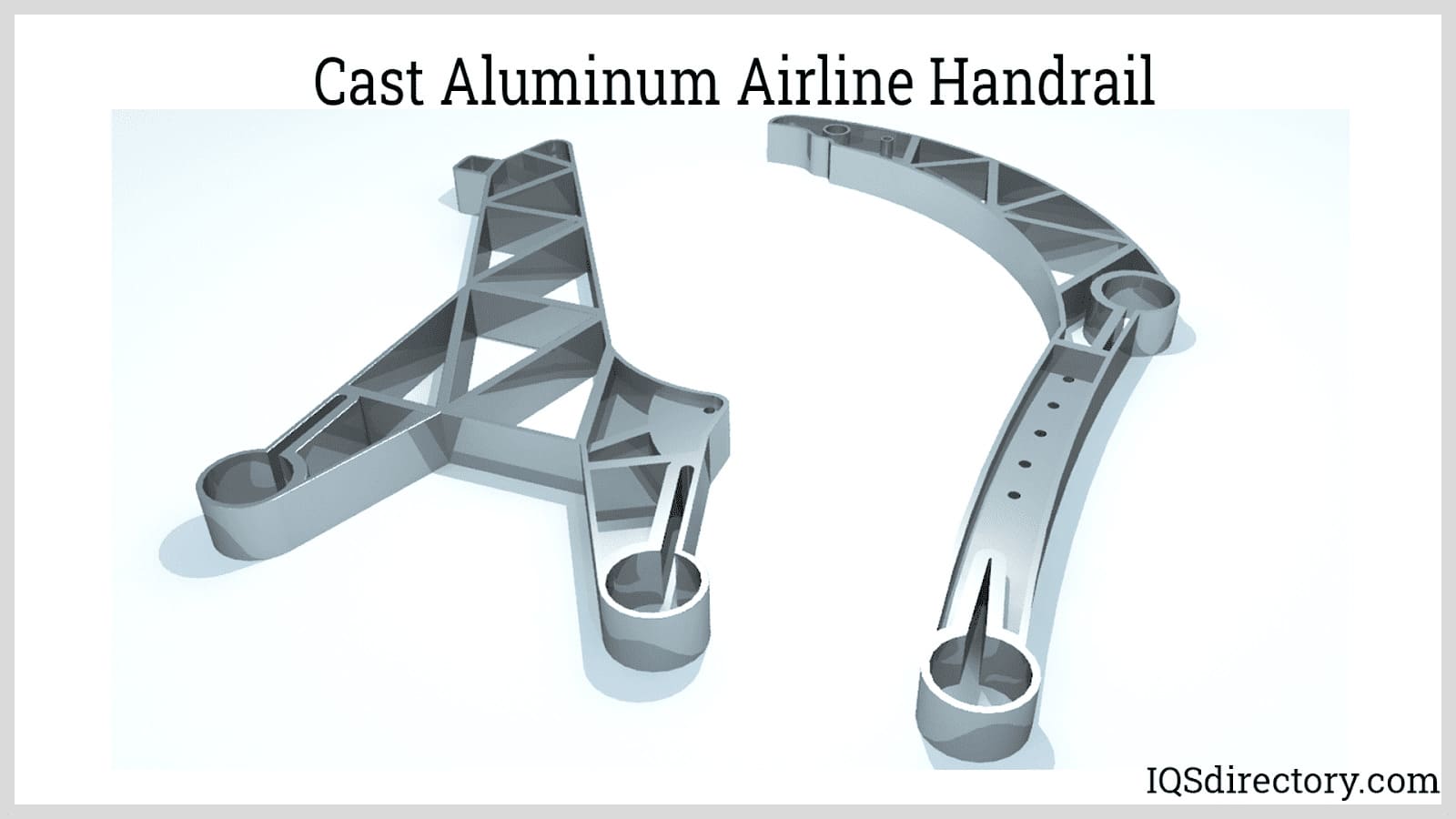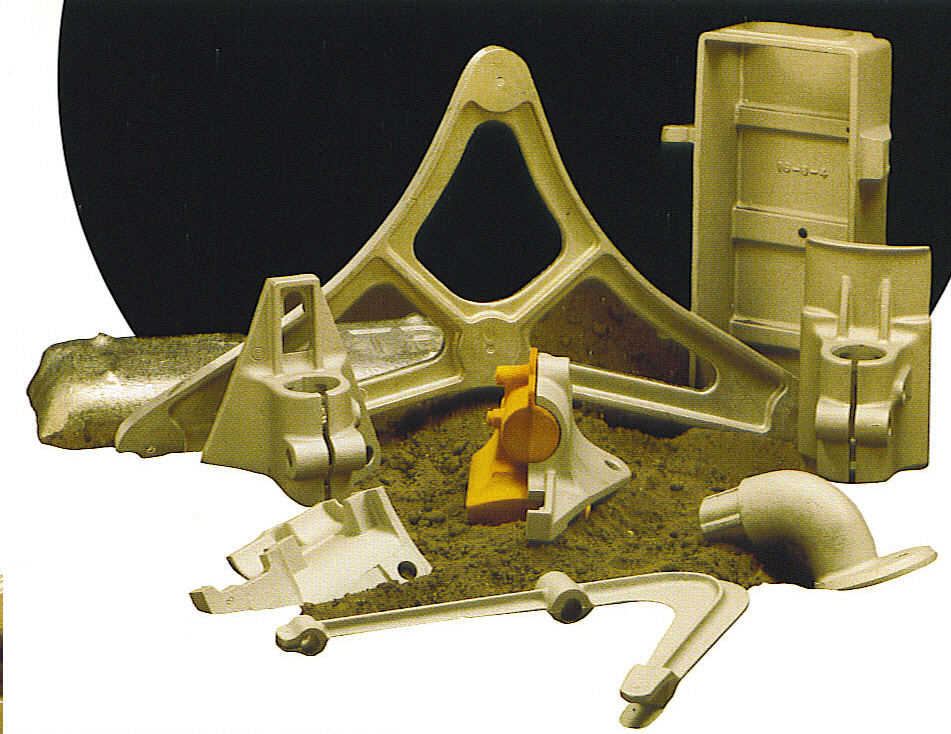Discovering the Diverse Applications and Benefits of Aluminum Foundry in Modern Manufacturing
Aluminum factories are crucial in today's production landscape. They produce components that serve different sectors, consisting of automotive and aerospace. The lightweight nature of Aluminum combined with its longevity makes it a favored selection. Furthermore, innovative spreading strategies boost manufacturing performance. Nonetheless, the effects of these improvements on sustainability and future trends call for more expedition. What possibilities and obstacles lie in advance for Aluminum shops in this evolving market?
The Role of Aluminum Foundries in Modern Manufacturing
Aluminum foundries play a necessary role in modern-day manufacturing, contributing significantly to numerous markets such as auto, aerospace, and construction. These facilities specialize in the melting and casting of aluminum, a lightweight, durable material understood for its outstanding deterioration resistance and thermal conductivity. The foundries utilize advanced methods, including sand casting, die casting, and investment spreading, to produce top notch components tailored to details applications.
Secret Applications of Aluminum Components Throughout Industries
Across different industries, Aluminum components are essential to improving effectiveness and efficiency. In the automobile field, Aluminum is widely used for engine blocks, transmission instances, and structural elements, adding to lighter lorries that enhance gas performance. The aerospace market relies on Aluminum for aircraft elements, wings, and frames, taking advantage of its high strength-to-weight proportion to enhance flight efficiency.
In electronic devices, Aluminum is made use of in warm sinks and coverings, supplying reliable thermal monitoring while maintaining light-weight characteristics (Wisconsin Aluminum Foundry). The construction sector gain from Aluminum in home window frameworks, roof covering, and cladding, where sturdiness and aesthetics are important
Furthermore, product packaging applications use Aluminum for foils and cans, supplying an effective barrier against moisture and light. In each of these sectors, Aluminum components not only sustain functional demands yet additionally promote sustainability with recyclability, making them a recommended selection in modern-day manufacturing practices.

Benefits of Aluminum Contrasted to Various Other Materials
The adaptability of Aluminum makes it an exceptional selection over several various other materials in manufacturing applications. One of its main benefits is its light-weight nature, which adds to decreased power consumption and boosted efficiency in transportation and building sectors. Furthermore, Aluminum exhibits outstanding corrosion resistance, boosting the longevity of products without the demand for considerable maintenance.
Aluminum's pliability allows for intricate designs and forms, catering to varied sector requirements, from automobile to aerospace. Its electric and thermal conductivity additionally exceeds that of many alternatives, making it optimal for applications requiring warm dissipation or electric transmission.
Furthermore, Aluminum is highly recyclable, advertising sustainability in making procedures. Compared to steel, it offers a beneficial strength-to-weight ratio, enabling robust yet light-weight structures. Jointly, these qualities setting Aluminum as a preferred product, enabling producers to attain both performance and sustainability in their items.
Cutting-edge Casting Strategies in Aluminum Foundries
In the domain name of Aluminum manufacturing, ingenious spreading methods are changing the production process and enhancing the material's applications. Among these methods, pass away spreading sticks out for its capacity to create complicated forms with high accuracy and marginal waste. This approach enables rapid automation, making it excellent for markets such as vehicle and electronic devices. Likewise, financial investment spreading has obtained popularity as a result of its capability to produce complex designs with outstanding surface area finish, fitting both large and small components.
Another remarkable method is sand spreading, which provides adaptability and cost-effectiveness for generating larger parts. Current innovations in 3D printing technologies are likewise being integrated right into Aluminum casting, making it possible for quick prototyping and personalization. These innovations not just boost efficiency yet also expand the possibilities for Aluminum applications throughout various fields, inevitably driving the development of modern-day production techniques.
Sustainability Efforts in Aluminum Production
Sustainability initiatives in Aluminum production focus on improving recycling procedures, which considerably minimize power consumption and emissions. Executing energy efficiency techniques further adds to a minimized carbon impact, making Aluminum a much more ecologically pleasant product. These initiatives reflect the industry's dedication to lasting production and resource preservation.
Reusing Aluminum Benefits
While Aluminum production is resource-intensive, reusing Aluminum offers considerable benefits that align with sustainability campaigns in production. Reusing Aluminum requires just 5% of the energy needed for primary production, considerably lowering greenhouse gas emissions. This energy effectiveness not only conserves natural deposits but likewise lessens the ecological impact linked with mining view and refining basic materials. Additionally, reusing Aluminum supports a round economic situation by reestablishing products back right into the supply chain, thereby lessening waste and advertising source conservation. The procedure additionally produces financial advantages with job production in reusing centers and reduces dependancy on foreign Aluminum sources. Overall, recycling Aluminum is an essential element of lasting practices that contribute to an extra ecologically accountable production landscape.
Energy Effectiveness Practices
The Aluminum production industry is progressively adopting power performance techniques to improve sustainability along with recycling initiatives. These efforts concentrate on enhancing energy usage throughout the production procedure. Manufacturers are carrying out innovative innovations such as high-efficiency heating systems and smart grid systems, which allow for much better energy administration and lowered waste. In addition, the assimilation of renewable resource resources, like solar and wind power, is coming to be extra common, additionally decreasing reliance on nonrenewable fuel sources. Continuous monitoring and analysis of power use promote the identification of inefficiencies and possibilities for improvement. In addition, workforce training on energy-saving strategies warranties that employees proactively add to power conservation initiatives, producing a culture of sustainability within the company. These practices collectively sustain an even more sustainable Aluminum production landscape.
Reduced Carbon Footprint
To achieve a lower carbon footprint, the Aluminum manufacturing sector is progressively accepting innovative sustainability campaigns. Companies are purchasing innovative modern technologies that lessen power intake and exhausts during the production process. The integration of sustainable power sources, such as solar and wind power, plays a crucial function in reducing reliance on fossil fuels. Furthermore, the recycling of Aluminum scrap significantly lowers the carbon impact, as recycled Aluminum calls for just a portion of the power required for primary production. Collective efforts amongst makers, governments, and ecological companies even more drive progress in sustainability. By embracing these steps, the Aluminum market not only addresses ecological problems yet likewise improves its one-upmanship in a market progressively concentrated on environment-friendly practices.
Future Trends in Aluminum Foundry Modern Technology
Advancement is at the center of Aluminum Foundry modern technology, reshaping and driving significant developments industry practices. Emerging trends include the integration of man-made knowledge and maker learning, boosting procedure optimization and quality assurance. These modern technologies promote anticipating upkeep, decreasing downtime and enhancing functional efficiency. In addition, making use view it now of 3D printing and additive manufacturing is acquiring grip, enabling complex geometries and decreased product waste.
Sustainability remains a critical focus, with advancements in recycling methods enhancing the round economic situation of aluminum. Business are increasingly adopting energy-efficient methods, such as low-pressure die spreading, which minimize power intake and discharges. Moreover, digital twins are coming to be commonplace, enabling real-time tracking and simulation of Foundry processes.

Regularly Asked Questions
What Safety and security Procedures Are in Location at Aluminum Foundries?
Aluminum foundries carry out numerous precaution, consisting of protective gear, appropriate air flow, fire avoidance systems, routine security training, and emergency situation procedures to alleviate risks related to high temperature levels, liquified metal handling, and potential direct exposure to dangerous materials.
Exactly How Do Aluminum Foundries Guarantee Quality Control During Manufacturing?
Aluminum shops execute rigorous quality assurance steps such as normal assessments, product screening, and adherence to industry requirements. These methods ensure consistency in items while lessening problems, eventually enhancing the dependability and efficiency of Aluminum elements.
What Are the Typical Obstacles Encountered by Aluminum Foundries?
Aluminum foundries commonly deal with difficulties such as keeping constant quality, taking care of manufacturing prices, guiding regulatory compliance, Your Domain Name resolving equipment maintenance concerns, and adapting to rising and fall market demands, every one of which can influence functional performance and productivity. - Wisconsin Aluminum Foundry
Exactly how Does the Aluminum Recycling Refine Operate In Foundries?
The Aluminum reusing process in factories includes gathering scrap aluminum, thawing it in heating systems, eliminating impurities, and casting the liquified metal right into desired shapes, thus reintroducing it into the production cycle successfully and sustainably.
What Are the Work Opportunities Available in Aluminum Foundries?
Work chances in Aluminum factories consist of roles such as Foundry drivers, quality assurance examiners, upkeep service technicians, engineers, and production supervisors. These settings need various skill levels, providing prospective for job development within the manufacturing field.
Sustainability efforts in Aluminum manufacturing focus on enhancing reusing procedures, which greatly minimize power consumption and discharges. While Aluminum production is resource-intensive, recycling Aluminum provides significant benefits that line up with sustainability initiatives in manufacturing. Recycling Aluminum calls for just 5% of the power required for main manufacturing, considerably minimizing greenhouse gas discharges. The Aluminum production market is progressively adopting energy performance techniques to improve sustainability together with recycling initiatives. In addition, the recycling of Aluminum scrap considerably decreases the carbon impact, as recycled Aluminum requires just a portion of the energy required for primary manufacturing.